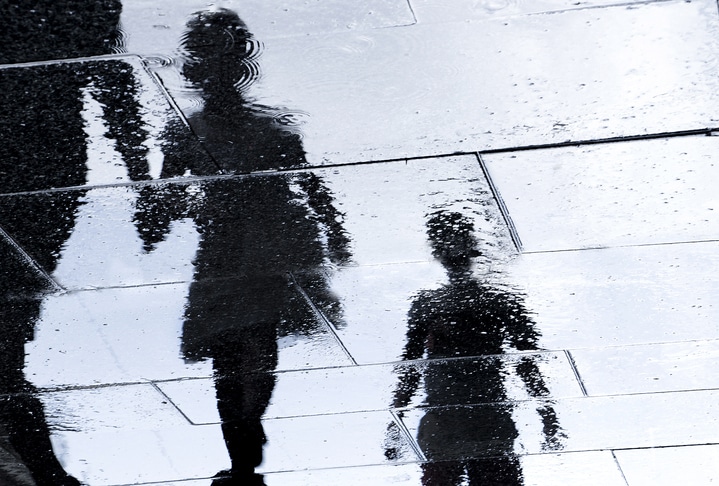They’re our youngest and most vulnerable citizens, yet despite protection initiatives and support services, between 50,000 and 100,000 children are abused or neglected each year in Australia.
Breaking the intergenerational cycle of abuse is paramount, but unless substantial funding and resources are redirected to preventing child abuse and neglect and providing skilful social and therapeutic services to those with histories of abuse, little will change, UniSA childhood adversity experts warn.
UniSA’s Professor Leonie Segal says authorities need to recognise and address the connections between childhood abuse and neglect, and family violence later in life.
“Family violence – including familial child abuse and neglect, and intimate partner violence – is a major public health and social issue,” Professor Segal says.
“It affects more than 20 per cent of the population and shapes every aspect of a person’s life, from their physical and mental health to their education, ability to interact with people, employment, and even criminal involvement.
“Yet what many authorities fail to understand is that child abuse is inextricably linked with violence later in life, and if we don’t respond appropriately to one, we will have little impact on the other.
“If more were done to help victims of child abuse while they’re still young, we could better disrupt pathways of abuse and stop victims becoming caught up in continuing cycles of violence.”
An estimated 2.2 million Australians have experienced sexual violence since the age of 15 with 3.6 million having experienced emotional abuse from a partner.
Prof Segal says the causal pathway between child abuse and family violence is clear – there are well- defined mechanisms and strong epidemiological relationships.
“The evidence of causality among victims of child abuse and family abuse later in life is unmistakable,” Prof Segal says.
“For example, children whose mothers have been the subject of substantiated child abuse or neglect have 10 times the risk of being the subject of substantiated child abuse themselves, and nearly 20 times the risk of being removed into out-of-home care – due to imminent and serious safety concerns.
“Teenagers who have been exposed to child abuse or neglect are at five to 33 times more likely to attend an emergency department for poisoning or self-harm and up to 49 times as likely to present at emergency for a mental health issue.
“Teenage dating violence is three to four times as common in girls exposed to familial child abuse or neglect and eight to 45 times as likely in boys with such exposure.
“Furthermore, for people in prison, more than 80 per cent of those involved in violent crimes had been exposed to abuse when a child.”
Prof Segal says children who are exposed to child abuse and neglect need specialised help, proportionate to their very complex family circumstances.
“Child abuse and neglect is experienced equally by females and males, and both can be involved in family violence as victim and perpetrator,” Prof Segal says.
“Too often media attention, and therefore public opinion, focusses on gendered violence, yet we know that both genders are affected equally as children, and mothers are the more likely perpetrator.
“In Australia, some 17 per cent of women and 6 per cent of men report ever being exposed to physical or sexual violence from an intimate partner, while 23 per cent of women and 16 per cent of men report ever experiencing emotional abuse by an intimate partner.
“What must be recognised is that family violence can affect anyone, and that the cycle of abuse almost always begins in childhood.
“It’s time to broaden the discussion about child abuse and family violence – but in a safe way by recognising the pathways into violence and the evidence that is before us.
“This logically leads to the need to better support infants, children and young people who are exposed to child abuse and neglect as a key component of any strategy for the prevention of family violence.”
The issue of family violence was discussed at the Disrupting pathways into family violence seminar held early June.
South Australian Minister for Child Protection Women and the Prevention of Domestic and Family Violence Katrine Hildyard says the importance of pursuing aligned solutions to strengthen families and keep children safe.
“To achieve real change, we need to implement a whole of government approach and whole of community approach focused on child safety and wellbeing,” Ms Hildyard says.
“We must change and deepen the public discourse to ensure that there is a better understanding of the risk and tension that the child protection system carries.
“Among the many actions required to meet these challenges is the need to develop deeper community engagement with, and understanding of, the complexity and interconnectedness of issues that families face and have an impact on children’s safety, such as domestic and family violence, mental ill health poverty and unemployment, intergenerational trauma, drug and alcohol misuse, and cyber-based crime, as well as the continuing impacts of the COVID-19 pandemic.
“I am determined to work together with families, communities and the whole sector and government to do this.”
She says the recent investment in child protection in the State Budget reflects the deep commitment needed to strengthen the system.
“We now have an additional $128.9 million and a further $7.5 million investment in services for children and young people in care and their caregivers, as well as providing additional support to young people leaving care and transitioning into jobs, housing, further education, or other life opportunities,” Ms Hildyard says.
“We are also working collaboratively with other parts of government and key stakeholders and service providers in the community to ensure that we are providing the right kind of support and resourcing to intervene with at-risk families at crucial times, and to build their capacity and capabilities.”
Get local, national and world news, plus sport, entertainment, lifestyle, competitions and more delivered straight to your inbox with the Canberra Daily Daily Newsletter. Sign up here.



